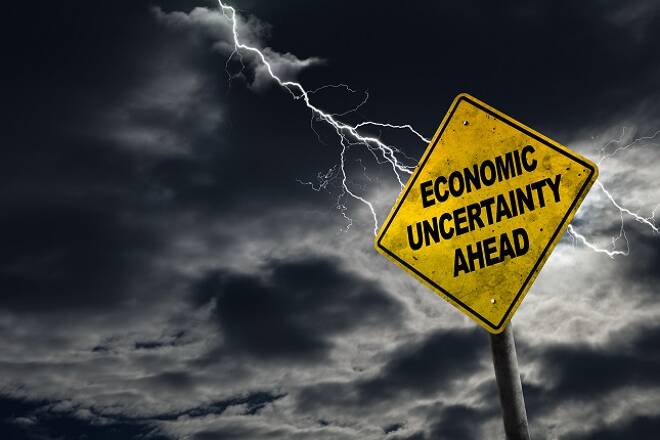Advertisement
Advertisement
Lockdown and Economic Stability – Impact of the Coronavirus on the World’s Economy Today
By:
Service sector activity took a dive, manufacturing sector likely to struggle further. As China comes out of lockdown, social unrest elsewhere could become an issue.
In a couple of words, what is going on in the markets?
How to describe what’s going on in the global financial markets, three words – hope versus despair…
The coronavirus continues to be one of the main topics of the week. How big is the impact of the epidemic across the world for now?
Significant, massive, colossal. Pretty disastrous, with the U.S likely to become the epicenter in the weeks ahead.
It’s going to take some time for the dust to settle and for governments to assess the damage.
You can forget about the depression, with governments needing to get control of the spread soon to limit the long-term impact.
Greatest concern continues to be over social unrest. We are seeing national guards in the U.S and police allowed to fine on the spot in the UK.
Social unrest could turn into civil war should governments fail to support the needy.
There are rays of hope as the spread eases in some geographies, but this remains of little comfort for now.
Let’s hope for improved numbers in the days ahead to bring some further optimism for a near-term end to the pandemic.
Meanwhile, what does economic data tell us about the impact of the coronavirus?
We saw the prelim March private sector PMI numbers on Tuesday, which reflected the impact of government efforts to contain the virus.
Service sector activity took the biggest hit, with travel & tourism, F&B, and retail amongst the biggest areas hit as countries went into lockdown.
When you consider service sector activity contribution to the global economy, it’s quite dire. In China, service sector activity now accounts for almost 50% of the economy, in the U.S and the UK it’s 70%. Then there was the reliance on service sector activity across the Eurozone to counter the contraction in the manufacturing sector.
Manufacturing sector activity held up pretty well when considering China’s February numbers but things may go from bad to worse.
In late March we heard of companies shutting down production facilities to add support to contain the virus. This coupled with the broken global supply chain suggests that the sector will take quite some time to recover.
There could be better numbers out of China, but with supply chains decimated even China may struggle to see a sharp rebound.
Service sector activity could bounce back more quickly, though the length of the shutdown and impact on unemployment will be key.
How is the situation in China?
Over the last few days, we have heard that the Chinese government is easing confinement rules, supported by a marked fall in the number of new cases.
Hubei has opened its doors once more after 2-months of lockdown, with Wuhan having only 1 new case reported on Monday.
One concern, however, is the impact of freedom of movement and whether there will be any pickup in the number of new cases.
The good news, however, is that China is looking to return to business as usual. With the support of both monetary and fiscal policy, China will be looking to rebuild the supply chain.
It’s going to take more than a couple of weeks to recover, however. Domestic demand will remain a drag, with global demand likely to remain dire as economies remain in shut down mode.
The global spread of the virus is going to need to abate for supply chains to recover. Global demand will also need to return, which will likely take some time.
Any hint of the virus lingering, however, and service sector activity will remain under pressure. Such an outcome will likely continue to pressure the global financial markets.
About the Author
Bob Masonauthor
With over 28 years of experience in the financial industry, Bob has worked with various global rating agencies and multinational banks. Currently he is covering currencies, commodities, alternative asset classes and global equities, focusing mostly on European and Asian markets.
Did you find this article useful?
Latest news and analysis
Advertisement
